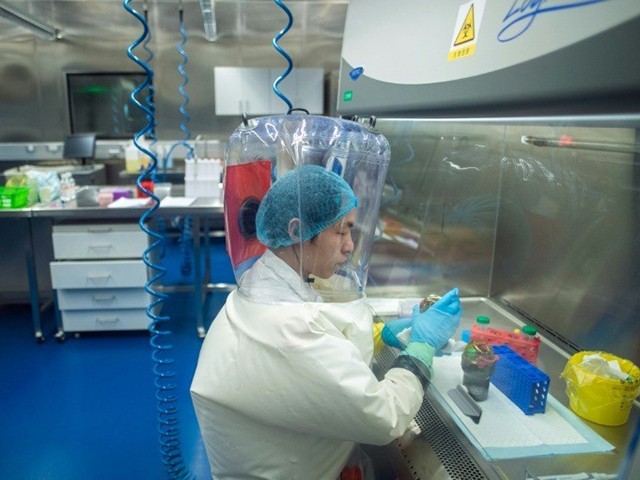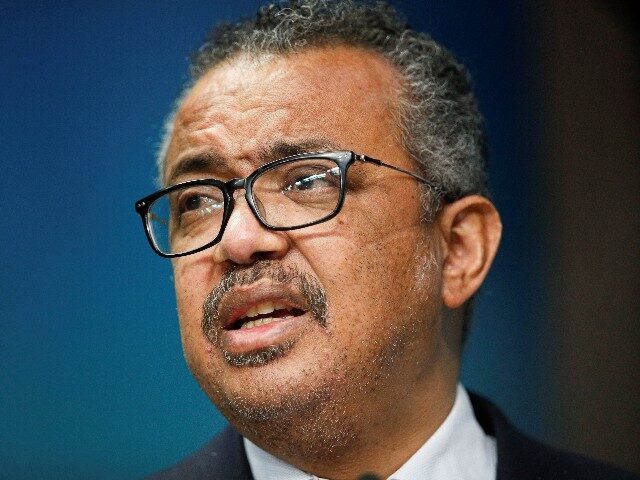World Health Organization (W.H.O.) Director-General Tedros Adhanom Ghebreyesus declared on Wednesday that he is “very concerned” about the coronavirus situation in China, where the Communist Party lifted some of its draconian lockdown measures with seemingly minimal preparation, resulting in large numbers of infections and potential deaths.
The Chinese government announced in early December it would “optimize” its “zero-Covid” strategy, which for nearly three years relied on city-wide impositions of house arrest rules and the imprisonment of thousands of people in quarantine camps, including both those infected with Chinese coronavirus and those suspected of having been exposed. The strategy resulted in at least dozens of deaths – most recently several killed in a late-night bus crash en route to a quarantine camp, but more commonly, as the result of starvation, neglect, lack of medication, or suicide – and triggered a wave of protests nationwide.
Following the protests in late November, authorities announced an end to “large-scale” lockdowns, reserving the right to impose house arrest of residential complexes or neighborhoods, and a new policy that allowed asymptomatic carriers to avoid the quarantine camps. Some three weeks later, reports out of China’s major cities warned that funeral homes and crematoriums are overwhelmed with bodies, even as China documents a very low number of coronavirus-related deaths.
Tedros – whose tenure at the helm of the W.H.O. has been a friendly one to the Chinese Communist Party – addressed the situation during the agency’s last press conference of the year on Wednesday. Tedros began his remarks with optimism about the general state of the pandemic, noting that omicron variant cases peaked globally in January and, since then, “the number of weekly reported [Chinese coronavirus] deaths has dropped almost 90 percent.” Tedros predicted the coronavirus pandemic, as a global emergency, would end in 2023.
Addressing China specifically, however, Tedros declared his agency “very concerned over the evolving situation in China with increasing reports of severe disease.”
“In order to make a comprehensive risk assessment of the situation on the ground, W.H.O. needs more detailed information on disease severity, hospital admissions, and requirements for ICU support,” he said. “W.H.O. is supporting China to focus its efforts on vaccinating people at the highest risk across the country and we continue to offer our support for clinical care and protecting its health system.”
Tedros also raised years-long concerns about the origin of the Chinese coronavirus pandemic. The pandemic began in Wuhan, a central Chinese megacity of 11 million people, in late 2019. Since then, despite no evidence supporting the theory, the Chinese government has repeatedly claimed the initial coronavirus outbreak began in Maryland and resulted from a U.S. Army laboratory leak.
In reality, many scientists and other international observers have raised the question of a potential leak from the Wuhan Institute of Virology causing the pandemic, especially given that the laboratory was known to be conducting experiments with other known coronaviruses at the time. The W.H.O. sent a research team to Wuhan in early 2021 to explore the origins of the virus, but the resulting report reached no conclusions other than indicating that a laboratory leak origin was unlikely. The report did offer one notable datum: in testing tens of thousands of animals in the area, W.H.O. scientists could not find a single one carrying the virus – indicating no virus reservoir in nature in Hubei province.
Tedros dismissed his own agency’s report at the time as inconclusive and urged China to be forthcoming with more data.
Nearly two years later, during the press conference on Wednesday, Tedros insisted that a laboratory leak in Wuhan was still a possible explanation for the pandemic.
“We continue to call on China to share their data and conduct the studies we have requested and which we continue to request,” Tedros said. “As I have said many times before, all hypotheses about the origins of this pandemic remain on the table.”

Inside the P4 laboratory in Wuhan, the Chinese biosafety laboratory accused by senior US officials of being at the origin of the coronavirus pandemic (Picture taken in 2017 – Johannes EISELE/AFP).
Asked several questions regarding the current situation in China, other W.H.O. experts present at the press conference insisted that any steep increase in cases and deaths in the country was a likely result of insufficient vaccination. W.H.O. emergencies chief Michael Ryan rejected the idea that China had recklessly abandoned its lockdown policies, noting that many “zero-Covid” protocols remained in place, and said the case numbers in China “were on the rise” prior to the “optimization” of policies.
“We’ve been saying this for weeks, that this highly infectious virus was always going to be very hard to stop completely with just public health and social measures,” Ryan said, urging China to do more to offer coronavirus vaccine products to its population.
“The question remains whether or not enough vaccination can be done in the coming week or two weeks that will actually blunt the impact of the Omicron wave and the burden on the health system.” He continued, “It’s difficult to make that assessment, as Dr Tedros has said. We don’t have complete knowledge of the impact.”
“There are many anecdotal reports around pressure on the health system, infectious disease clinics filling up, emergency rooms filling up, and even ICUs filling up in certain situations and lots of anecdotal reports of occupational data suggesting that many people are off work at the moment,” he concluded, urging greater expansion of access to vaccine products.
W.H.O. officials also answered questions concerning how China is tracking its coronavirus data. Testing has declined significantly in the past month, as one of the “optimized” measures against the pandemic was to no longer force citizens to take PCR tests to enter most public spaces. The government also announced it would start counting only deaths in which a person suffers respiratory failure and tests positive for Chinese coronavirus as a coronavirus death – meaning victims who experience other symptoms before death or damage in organs outside the respiratory system do not count in the data.
Ryan excused the difference in China’s data with the reality being reported on the ground in the country.
“In the case currently in China, what is being reported is relatively low numbers of cases in hospitals or relatively low numbers of cases in ICUs while anecdotally there are reports that those ICUs are filling up,” he noted. “Now, it could be again that the reported data is behind the reality. In a fast-moving wave, you might have reported three days ago that your hospital is okay.”
“This morning it may not be okay because the wave has come and all of a sudden you have very high force of infection,” he said. “So I wouldn’t like to say that China are [sic] actively not telling us what’s going on. I think they’re behind the curve in what’s actually happening, as everyone is in a situation like this, and we need to get better ways of getting that data quickly so we can monitor together the situation.”

COMMENTS
Please let us know if you're having issues with commenting.